The strengthening effect of rhenium in molybdenum-based alloys and the application prospects of molybdenum-rhenium alloy materials.
- Categories:Application Technology
- Author:rheniumet
- Origin:
- Time of issue:2023-07-07
- Views:0
(Summary description)As one of the representatives of high-temperature alloys, molybdenum-based alloys have been widely used in aerospace, nuclear industry, chemical industry, and other fields. However, there are still some limitations in the mechanical properties and high-temperature stability of molybdenum-based alloys, which has prompted researchers to explore new alloy design strategies and methods of adding alloying elements. Rhenium, as a high-melting point and high-density transition metal, possesses excellent oxidation resistance and corrosion resistance, and thus has been extensively applied in high-temperature alloys. Studies have shown that the addition of rhenium to molybdenum-based alloys can significantly improve the strength, plasticity, and high-temperature stability of the alloys. Furthermore, molybdenum-rhenium alloy materials have broad prospects in aerospace, nuclear industry, and other fields due to their high strength, high temperature durability, and good corrosion resistance. This article will introduce the strengthening effect of rhenium in molybdenum-based alloys and discuss the application prospects of molybdenum-rhenium alloy materials.
The strengthening effect of rhenium in molybdenum-based alloys and the application prospects of molybdenum-rhenium alloy materials.
(Summary description)As one of the representatives of high-temperature alloys, molybdenum-based alloys have been widely used in aerospace, nuclear industry, chemical industry, and other fields. However, there are still some limitations in the mechanical properties and high-temperature stability of molybdenum-based alloys, which has prompted researchers to explore new alloy design strategies and methods of adding alloying elements. Rhenium, as a high-melting point and high-density transition metal, possesses excellent oxidation resistance and corrosion resistance, and thus has been extensively applied in high-temperature alloys. Studies have shown that the addition of rhenium to molybdenum-based alloys can significantly improve the strength, plasticity, and high-temperature stability of the alloys. Furthermore, molybdenum-rhenium alloy materials have broad prospects in aerospace, nuclear industry, and other fields due to their high strength, high temperature durability, and good corrosion resistance. This article will introduce the strengthening effect of rhenium in molybdenum-based alloys and discuss the application prospects of molybdenum-rhenium alloy materials.
- Categories:Application Technology
- Author:rheniumet
- Origin:
- Time of issue:2023-07-07
- Views:0
Introduction
As one of the representatives of high-temperature alloys, molybdenum-based alloys have been widely used in aerospace, nuclear industry, chemical industry, and other fields. However, there are still some limitations in the mechanical properties and high-temperature stability of molybdenum-based alloys, which has prompted researchers to explore new alloy design strategies and methods of adding alloying elements. Rhenium, as a high-melting point and high-density transition metal, possesses excellent oxidation resistance and corrosion resistance, and thus has been extensively applied in high-temperature alloys. Studies have shown that the addition of rhenium to molybdenum-based alloys can significantly improve the strength, plasticity, and high-temperature stability of the alloys. Furthermore, molybdenum-rhenium alloy materials have broad prospects in aerospace, nuclear industry, and other fields due to their high strength, high temperature durability, and good corrosion resistance. This article will introduce the strengthening effect of rhenium in molybdenum-based alloys and discuss the application prospects of molybdenum-rhenium alloy materials.
1、Strengthening Effect of Rhenium in Molybdenum-Based Alloys.
1)Mechanical Properties of Molybdenum-Rhenium Alloy
Pure molybdenum, as a body-centered cubic metal, exhibits brittleness at room temperature and has poor workability. This, to some extent, limits the deep processing performance and service effectiveness of molybdenum metal. The addition of rhenium to molybdenum can significantly improve its low-temperature brittleness, thereby enhancing its workability. It increases the strength while maintaining good plasticity. Moreover, the addition of rhenium also changes the mechanical deformation behavior of molybdenum from a single slip mechanism to a combination of twinning and slip during hot and cold working processes. It inhibits the embrittling effects of carbon and oxygen, improves the material's weldability, and enables forged and rolled products to have a lower ductile-to-brittle transition temperature. It also reduces the degree of embrittlement after recrystallization annealing. This improvement phenomenon in molybdenum due to the addition of rhenium is known as the "rhenium effect."
2)Thermal and Physical Properties of Molybdenum-Rhenium Alloy
Figure 1 illustrates the influence of rhenium content on the thermal conductivity and coefficient of thermal expansion of molybdenum-rhenium alloy. From Figure 2, it can be observed that for a molybdenum-rhenium alloy with the same composition, as the temperature increases, the thermal conductivity gradually decreases, and the coefficient of thermal expansion increases. For molybdenum-rhenium alloys with different compositions, as the rhenium content increases, the thermal conductivity at the same temperature gradually decreases. Additionally, with an increase in rhenium content, the coefficient of thermal expansion at the same temperature gradually increases. The possible reasons for this phenomenon are as follows:
The thermal conductivity of pure rhenium is lower than that of pure molybdenum, while the coefficient of thermal expansion of pure rhenium is higher than that of pure molybdenum. Therefore, with an increase in rhenium content, the thermal conductivity at the same temperature gradually decreases, while the coefficient of thermal expansion gradually increases.
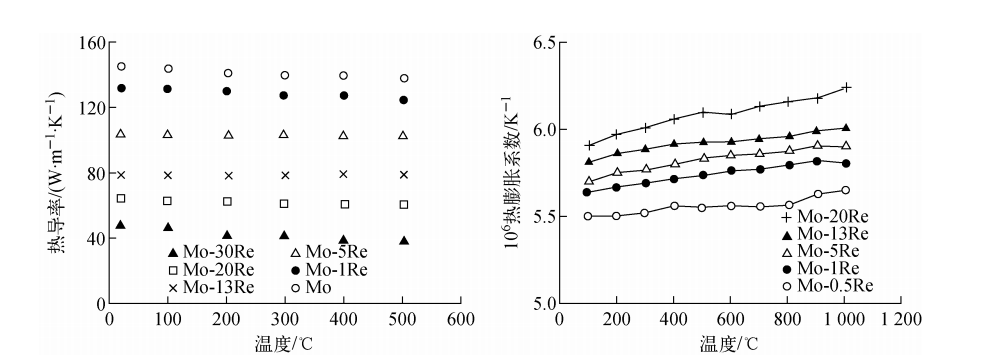
Figure 1: Influence of Rhenium Content on Thermal Conductivity and Coefficient of Thermal Expansion of Molybdenum-Rhenium Alloy.
3)Irradiation Performance of Molybdenum-Rhenium Alloy
There are many types of radiation present in a reactor, but for metallic materials, neutron irradiation has the most significant impact, while the effects of alpha, beta, and gamma radiation are relatively small. There is limited public literature available on the neutron irradiation performance of molybdenum-rhenium alloy. Researchers such as Fabritsiev from Russia have conducted systematic studies on the influence of different rhenium contents on the irradiation resistance of molybdenum-rhenium alloy.
Figure 3 illustrates the effects of rhenium content and irradiation temperature on the tensile strength and elongation of molybdenum-rhenium alloy. In Figure 3, "Trest" represents the testing temperature for mechanical properties, and "Tirr" represents the irradiation temperature. From Figure 3, it can be observed that for molybdenum-rhenium alloys with rhenium content ranging from 0.5% to 20%, under fast neutron irradiation of 5 dpa (displacements per atom), severe irradiation embrittlement occurs when the irradiation temperature is between 450°C and 800°C. However, the variations in tensile strength after irradiation are different. When the irradiation temperature is between 450°C and 550°C, molybdenum-rhenium alloy exhibits irradiation softening, with a significant decrease in yield strength and a nearly complete loss of ductility. On the other hand, when the irradiation temperature is between 760°C and 800°C, molybdenum-rhenium alloy exhibits irradiation hardening, with an elongation ranging from 2% to 3%.
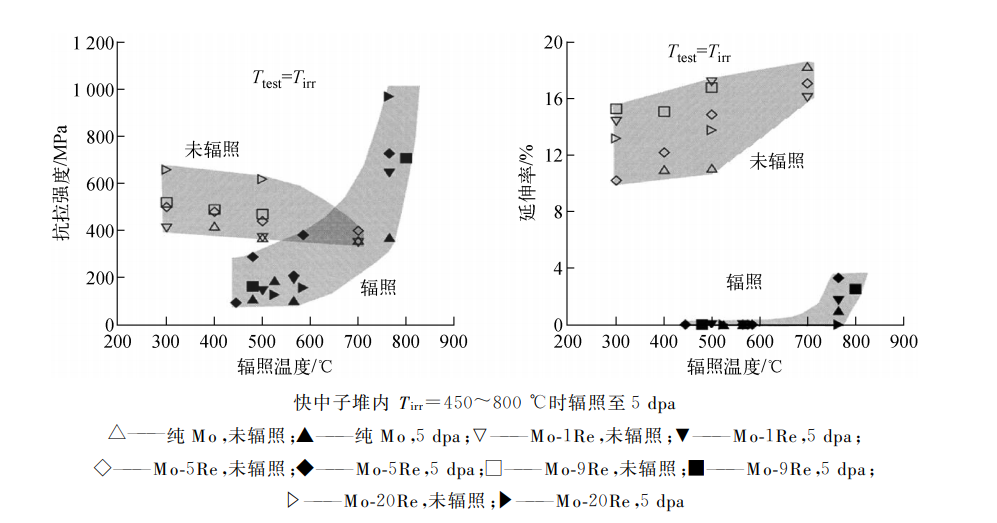
Figure 2: Influence of Irradiation Temperature on Tensile Strength and Elongation of Molybdenum-Rhenium Alloy.
2、How to Choose the Rhenium Content in Molybdenum-Rhenium Alloy
When the rhenium content is between 11% and 50%, the performance of the alloy is significantly improved compared to pure molybdenum. Generally, within the solid solubility range, the overall performance tends to improve with an increase in rhenium content. For example, as the rhenium content increases, the ductile-to-brittle transition temperature of molybdenum-rhenium alloy gradually decreases. When the rhenium content reaches 50%, the ductile-to-brittle transition temperature reaches around -254°C. Additionally, as the rhenium content increases, the recrystallization temperature of molybdenum-rhenium alloy gradually increases. When the rhenium content exceeds 10%, the recrystallization temperature of molybdenum-rhenium alloy increases to 1200°C, thereby improving its high-temperature performance.
With an increase in rhenium content, solid solution strengthening is enhanced, and the grain size becomes finer. As a result, the yield strength and tensile strength of molybdenum-rhenium alloy gradually increase. Stress factors and hardening indices also increase, leading to enhanced work hardening and improved ductility. Moreover, as the rhenium content increases, the anisotropy of molybdenum-rhenium alloy gradually decreases. When the rhenium content reaches 50%, the alloy exhibits isotropic behavior, with identical elastic coefficients in all crystal orientations.
Scientists have studied the welding performance of molybdenum-rhenium alloys with different rhenium contents and found that alloys with rhenium content above 25% exhibit good mechanical properties, especially in terms of ductility. High-temperature creep properties of various molybdenum-rhenium compositions were determined, and it was found that the Mo-51Re alloy demonstrated higher plasticity, creep rate, and shorter fracture time. In practical production, the rhenium content in molybdenum-rhenium alloy should not exceed 51% to avoid the formation of a large amount of brittle σ phase during the manufacturing process.
Molybdenum-rhenium alloys used in aerospace applications require not only good room-temperature performance but also low ductile-to-brittle transition temperature, excellent ductility, high strength, and high recrystallization temperature. Typically, rhenium content is above 40%. Researchers have conducted studies on the performance and structure of several molybdenum-rhenium alloys with rhenium content above 40%. Mo-44.5%Re alloy was found to be free of σ phase and exhibited outstanding low-temperature ductility, mechanical properties, good formability, and ease of processing. It demonstrated excellent overall performance, making it suitable for aerospace applications.
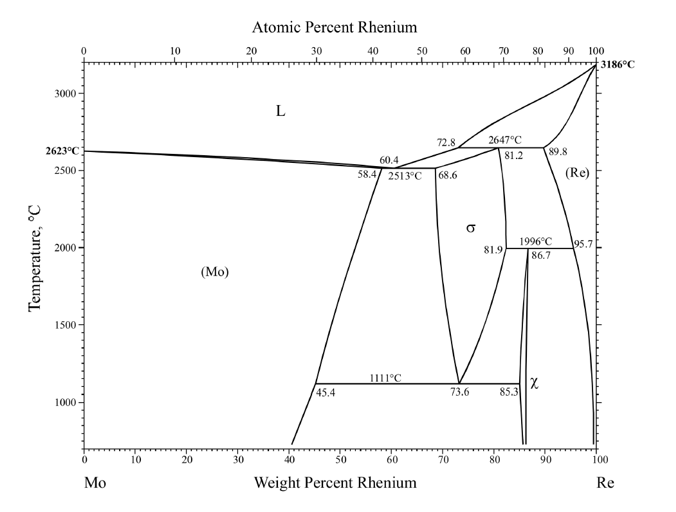
Figure 3: Phase Diagram of Molybdenum-Rhenium Alloy.
In an American patent for a molybdenum-rhenium alloy, the controlled alloy composition includes Mo, Re, W, Y, Rh, Sc, Ta, Si, Tb, V, and Nb/Zr. The total content of the other elements, except for Mo and Re, must be controlled within 3% (by mass fraction), while the Re content is set at 44.5% ± 0.5%, generally less than 44.7%. Compared to the two commercially popular molybdenum-rhenium alloys, Mo-41%Re and Mo-47.5%Re, this composition of molybdenum-rhenium alloy exhibits better overall performance. The ductile-to-brittle transition temperature of Mo-41%Re is approximately -150°C, which is still relatively high for most aerospace applications. However, the ductile-to-brittle transition temperature of this molybdenum-rhenium alloy is lower than -200°C, making it more suitable. The Mo-47.5%Re alloy is prone to the formation of brittle phase σ phase at temperatures between 1075°C and 1275°C, which reduces its low-temperature ductility. Ultimately, the low-temperature ductility of Mo-47.5%Re is similar to Mo-41%Re, but both are inferior to this particular molybdenum-rhenium alloy. Therefore, the Mo-44.5%Re alloy exhibits superior overall performance.
Figure 4 illustrates the influence of rhenium content on the yield strength and elongation of molybdenum-rhenium alloy. As shown in the figure, the rhenium content needs to be higher than 15% to have a significant rhenium strengthening effect. When the rhenium content is in the range of 9% to 14%, the alloy exhibits the best room temperature ductility with an elongation approaching 40%. At around 14% rhenium content, the molybdenum-rhenium alloy shows the best elongation (close to 40%) and processing performance, while also benefiting from some rhenium solid solution strengthening. This may explain why the Mo-14Re alloy is used as a core structural material in reactor applications.
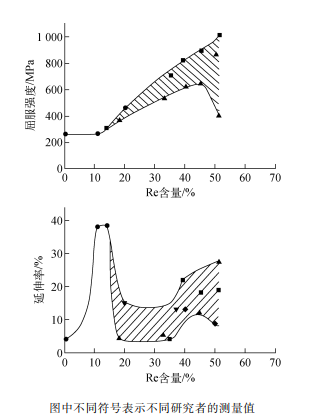
Figure 4 The effect of rhenium content on the yield strength and elongation of molybdenum-rhenium
3、The applications of molybdenum-rhenium alloys
Molybdenum-rhenium alloy, due to its excellent performance, finds wide applications in high-tech fields such as electronics, aerospace, and nuclear energy. Here are a few examples:
1)Molybdenum-rhenium alloy exhibits excellent radiation resistance and can be used as a structural cladding material for thermal ion exchangers in space nuclear reactors.
2)Molybdenum-rhenium alloy has high tensile strength and good ductility, making it suitable for the production of foils and ultra-fine wire, which are used as excellent elastic components.
3)Molybdenum-rhenium alloy demonstrates good high-temperature performance, making it suitable for applications in heaters, reflectors, rocket thrusters, furnaces, thermocouples, and other high-temperature equipment. It also offers long service life in such applications.
4)Molybdenum-rhenium alloy possesses good electrical conductivity, wear resistance, and arc erosion resistance, making it widely used in electronic devices.
In summary, with the development and demand of modern high-tech industries, molybdenum-rhenium alloy holds promising prospects for various applications.
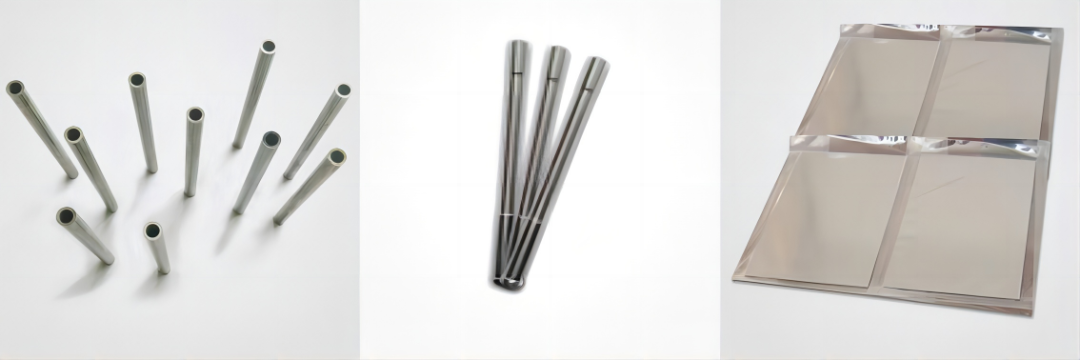
Rheniumet Ltd., a company specializing in the research and development of rhenium and rhenium alloy materials, has developed a molybdenum-rhenium alloy with a composition of 47.5% rhenium specifically for medical applications.
While molybdenum-rhenium alloy has traditionally been used in high-temperature and nuclear power fields, it has also gained attention in the medical field due to its high strength, excellent toughness, ductility, biocompatibility, and extremely low magnetic sensitivity. These properties make it an ideal alternative to traditional implant materials in the medical industry.
In 2012, Company M in the United States successfully developed a molybdenum-rhenium alloy stent, which is currently being used in clinical applications in Europe. This alloy has high strength, allowing the production of stents with a wall thickness of only 0.06 millimeters, making it the thinnest stent ever created. Following the significant success of the molybdenum-rhenium alloy stent, Company M started organizing a large group of device designers, design engineers, and orthopedic surgeons to explore the potential applications of molybdenum-rhenium alloy in surgical implants for the spine and craniofacial region. During the same period, the ASTM (American Society for Testing and Materials) issued the standard specification "Forged Molybdenum-47.5 Rhenium Alloy (UNS R03700) for Surgical Implant Applications" (ASTM F3273-17).
In 2017, the Europa Pedicle Screw System, manufactured using molybdenum-rhenium alloy by Company M, received FDA 510(k) clearance, becoming the first FDA-approved medical device that utilizes this novel molybdenum-rhenium alloy as an implant material. This material offers unprecedented strength, ductility, durability, and biocompatibility. The implant materials currently used in clinical practice have been titanium, cobalt, and iron alloys that have been in use for over 40 years. The limitations of traditional implant materials have failed to meet the clinical needs of patients. Molybdenum-rhenium alloy, as a high-temperature alloy material, can reduce soft tissue damage, allowing patients to recover faster and achieve better treatment outcomes. The Europa Pedicle Screw System, made of molybdenum-rhenium alloy, has been used for the treatment of adult spinal deformities, demonstrating significant advantages over traditional materials in terms of structural durability and ductility. It is currently being widely promoted in the European and American markets. In 2022, the Molybdenum-Rhenium Anterior Cervical Plate System from Company M received FDA 510(k) clearance, further expanding the applications of molybdenum-rhenium alloy in medical devices.
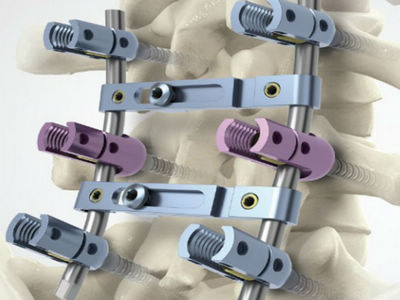
Scan the QR code to read on your phone
Contact Us
Address: Room 401, Building 10, Xinggong Science and Technology Park, No. 100 Luyun Road, Changsha High-tech Development Zone, Hunan
Email:sales@rheniumet.com

scan it Follow us
Copyright: Hunan Rhenium Alloy Material Co., Ltd. ICP No. 13005464-1 Website construction: www.300.cn


